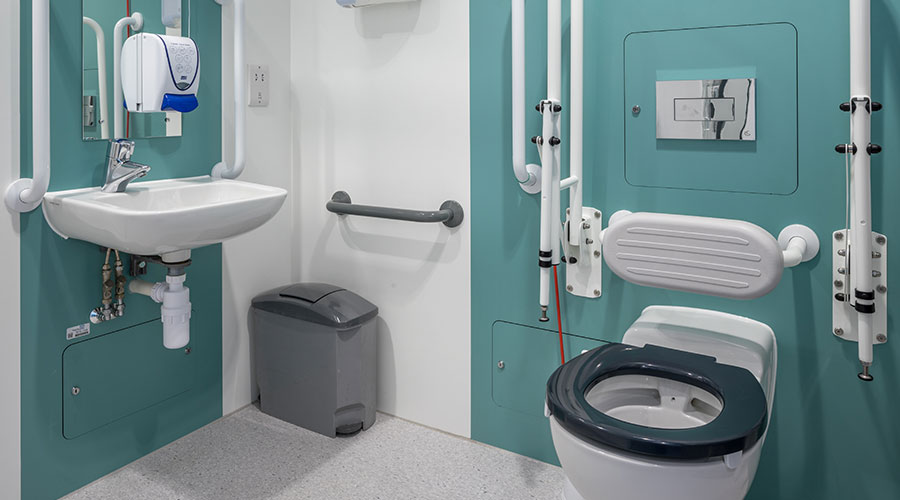What’s In the Toilet Bowl Is in the Air, Too

Aerosolized contaminants from toilet plumes remain airborne for up to seven days and can be inhaled by patients and healthcare workers.
Concerns are growing about bacteria and viruses that are aerosolized by flushing toilets in patient care areas of hospitals. Four subject matter experts discussed the topic of toilet plumes and their link to healthcare-associated infections (HAIs) in a recent Leapfrog Partners Advisory Council webinar.
The prevalence of HAIs has been linked with the generation of toilet plume bioaerosols from the feces of patients infected with enteric pathogens, leading to environmental contamination and inhalation exposures among other patients, immunocompromised people and healthcare workers.
There is evidence that when the toilet is flushed, a plume of water rises 6 feet into the air and spreads over 65 square feet to the surrounding environmental surfaces. Even more alarmingly, the aerosolized contaminants remain airborne for up to seven days and can be inhaled by patients and healthcare workers.
Takeaways from the webinar include these:
- Clostridioides difficile (C. diff) spores are present in toilet bowl water even after 24 flushes. Large-droplet spore deposits accumulated over the 24-flush period. Droplet nuclei spore bioaerosol was produced over at least 12 flushes. The conclusion is that toilets contaminated with C. diff spores are a persistent source of environmental contamination over an extended number of flushes.
- In addition to C. diff and other pathogens, studies have identified the spread of norovirus in toilet plume. “We describe two cases of healthcare-associated Legionnaires disease in two patients in France hospitalized five months apart in the same room,” according to the study. “The whole genome-sequencing analysis showed the clinical isolates from the patients and the room’s toilet clustered together. Legionella pneunomophila could lead to a risk for exposure from flushing.”
- Toilet plumes present a hazardous drug risk to oncology nurses.
- Wipe testing for hazardous drugs has shown contamination in restrooms.
- Contaminated surfaces can include the toilet rim, seat, flush handle, sink, door handle and floor.
- Hospital toilets generate particles from 0.02 microns (µm) to 10µm in diameter.
- Particles smaller than 5µm are referred to as respirable because they can be inhaled, and those smaller than 2µm are referred to as alveolar because they can be inhaled deeply into the lungs.
- Particles larger than approximately 5µm fall to the floor and other surfaces. One study showed that almost 7 milliliters (mL) of liquid is expelled during one flush, with droplets landing more than 4 feet from the toilet.
- An uncovered toilet produced thousands of particles of varying sizes over five minutes.
- The highest concentration of particles occurred within the first 90 seconds.
- Guidelines recommend placing an absorbent plastic-backed pad (PBP) over the toilet before flushing, although no studies have evaluated the effectiveness of this practice. One study compared the efficacy of a PBP to a reusable, removable, solid toilet cover. They were tested at 16 inches and 40 inches above the floor. Study results show that both products reduced flushed particles by 99 percent at both heights. But the PBP was drawn into the bowl during all tests due to negative pressure. This could lead to clogged toilets and plumbing systems.
J. Darrel Hicks, BA, MESRE, CHESP, Certificate of Mastery in Infection Prevention, is the past president of the Healthcare Surfaces Institute. Hicks is nationally recognized as a subject matter expert in infection prevention and control as it relates to cleaning. He is the owner and principal of Safe, Clean and Disinfected. His enterprise specializes in B2B consulting, webinar presentations, seminars and facility consulting services related to cleaning and disinfection. He can be reached at [email protected], or learn more at www.darrelhicks.com.
The post "What's In the Toilet Bowl Is in the Air, Too" appeared first on Healthcare Facilities Today

